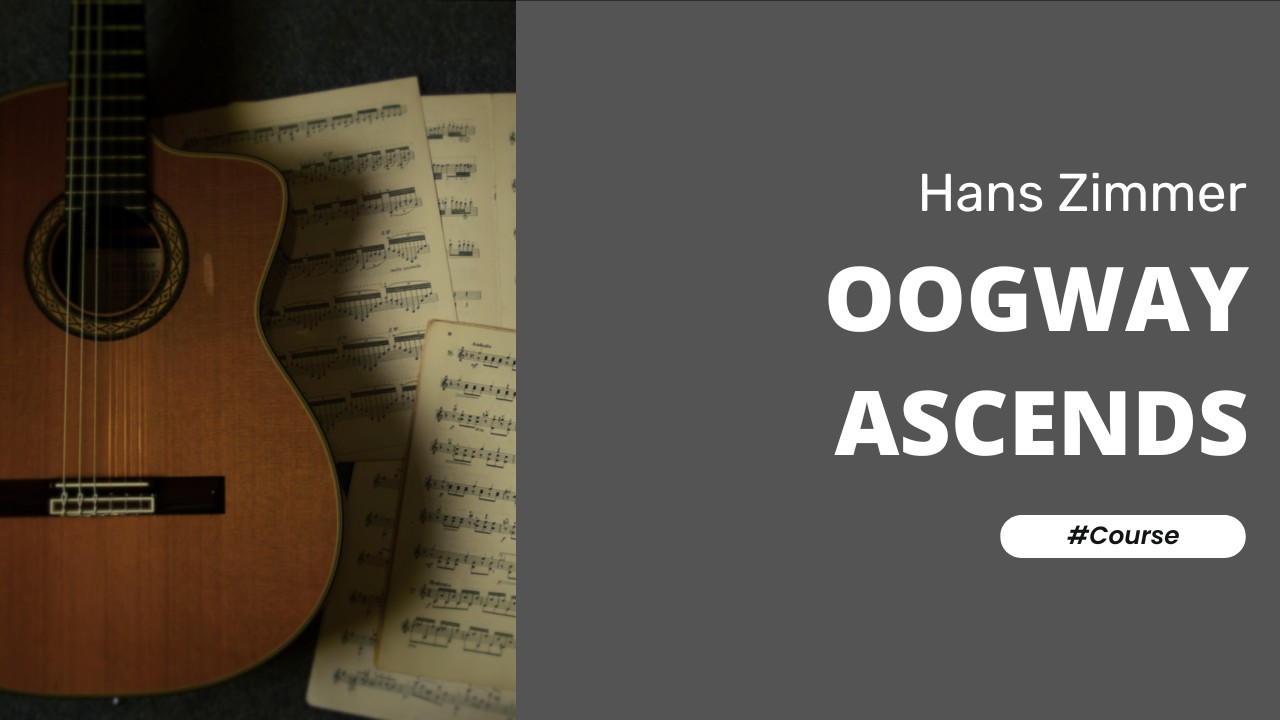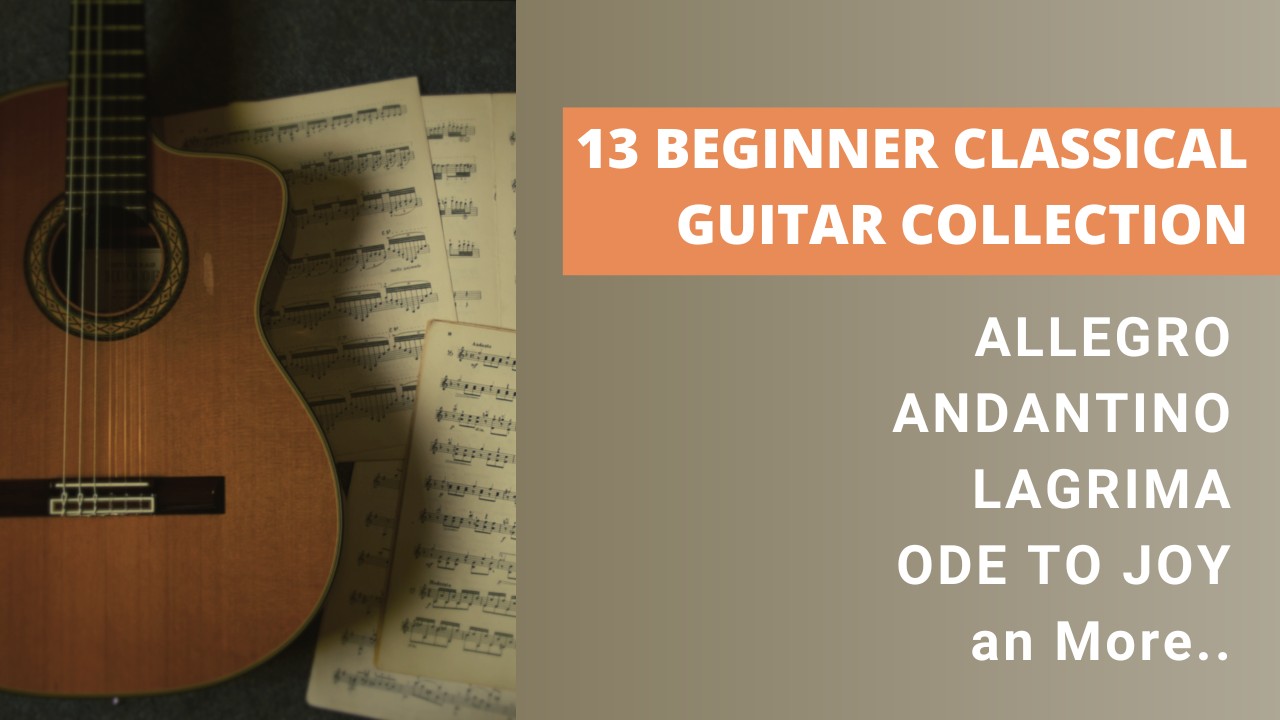Etude “Allegro” by Mauro Guiliani
Introduction
Etude “Allegro” by Mauro Giuliani is a cornerstone piece in the classical guitar repertoire, showcasing the brilliance and technical prowess of one of the most influential guitarists and composers of the early 19th century. Mauro Giuliani, an Italian virtuoso, significantly contributed to the development of guitar technique and repertoire during the Classical period. His works are celebrated for their melodic beauty, structural elegance, and technical demands, which continue to challenge and inspire guitarists today.
“Etude ‘Allegro’” is a study that encapsulates Giuliani’s mastery of the guitar, combining rapid arpeggios, precise scales, and dynamic contrasts. The piece is designed to develop right-hand agility and left-hand coordination, making it an essential exercise for aspiring guitarists. The “Allegro” tempo, characterized by its lively and brisk pace, requires the performer to maintain clarity and accuracy while delivering a spirited and energetic performance.
Playing “Etude ‘Allegro’” on classical guitar demands a high level of technical proficiency and musicality. The guitarist must navigate the piece’s intricate passages with precision, ensuring each note is articulated clearly and cleanly. The aim should be to move towards a tempo of around 110 to 140 BPM. An etude is usually designed or composed to assist a player to overcome a particular technical challenge and this etude is no different in that respect. The purpose of this etude is to develop articulation, speed & accuracy in the right hand with particular attention being paid to arpeggio type patterns.
“Etude ‘Allegro’” not only serves as a technical exercise but also as a delightful concert piece that highlights the guitar’s versatility and expressive potential. As such, here are few tips to keep in mind as you learn and play this piece:
- Keep your right hand steady
- Restrict movement to the large joints of the hand (not too much bouncing)
- Let your fingertips flow across the strings like a paint brush
- Don’t grab at the strings
- Try to keep your wrist straight without too much bending
- Relax
The right-hand fingers used are:
P: Thumb (Pulgar) i: Index m: Middle a: Anular (ring)
Musical Style
Mauro Giuliani’s musical style is emblematic of the Classical period, characterized by its clarity, balance, and elegant phrasing. As a virtuoso guitarist and composer, Giuliani seamlessly blended technical brilliance with expressive musicality. His compositions often feature intricate arpeggios, precise scales, and dynamic contrasts, showcasing the guitar’s capabilities while adhering to the classical ideals of form and structure. Giuliani’s works are celebrated for their melodic charm and harmonic sophistication, making them essential repertoire for classical guitarists. His contributions to guitar technique and literature have left a lasting impact, influencing countless musicians and advancing the instrument’s development.
Notable Pieces
Five notable pieces by Mauro Giuliani:
• Grande Overture, Op. 61
• Rossiniana No. 1, Op. 119
• Concerto for Guitar and Orchestra in A Major, Op. 30
• Le Papillon, Op. 50
• Six Variations on a Theme by Handel, Op. 107
Let your fingers fly!
JoshCourse Instructor
Etude Course
About this Course
Introduction
Etude “Allegro” by Mauro Giuliani is a cornerstone piece in the classical guitar repertoire, showcasing the brilliance and technical prowess of one of the most influential guitarists and composers of the early 19th century. Mauro Giuliani, an Italian virtuoso, significantly contributed to the development of guitar technique and repertoire during the Classical period. His works are celebrated for their melodic beauty, structural elegance, and technical demands, which continue to challenge and inspire guitarists today.
“Etude ‘Allegro’” is a study that encapsulates Giuliani’s mastery of the guitar, combining rapid arpeggios, precise scales, and dynamic contrasts. The piece is designed to develop right-hand agility and left-hand coordination, making it an essential exercise for aspiring guitarists. The “Allegro” tempo, characterized by its lively and brisk pace, requires the performer to maintain clarity and accuracy while delivering a spirited and energetic performance.
Playing “Etude ‘Allegro’” on classical guitar demands a high level of technical proficiency and musicality. The guitarist must navigate the piece’s intricate passages with precision, ensuring each note is articulated clearly and cleanly. The aim should be to move towards a tempo of around 110 to 140 BPM. An etude is usually designed or composed to assist a player to overcome a particular technical challenge and this etude is no different in that respect. The purpose of this etude is to develop articulation, speed & accuracy in the right hand with particular attention being paid to arpeggio type patterns.
“Etude ‘Allegro’” not only serves as a technical exercise but also as a delightful concert piece that highlights the guitar’s versatility and expressive potential. As such, here are few tips to keep in mind as you learn and play this piece:
- Keep your right hand steady
- Restrict movement to the large joints of the hand (not too much bouncing)
- Let your fingertips flow across the strings like a paint brush
- Don’t grab at the strings
- Try to keep your wrist straight without too much bending
- Relax
The right-hand fingers used are:
P: Thumb (Pulgar) i: Index m: Middle a: Anular (ring)
Musical Style
Mauro Giuliani’s musical style is emblematic of the Classical period, characterized by its clarity, balance, and elegant phrasing. As a virtuoso guitarist and composer, Giuliani seamlessly blended technical brilliance with expressive musicality. His compositions often feature intricate arpeggios, precise scales, and dynamic contrasts, showcasing the guitar’s capabilities while adhering to the classical ideals of form and structure. Giuliani’s works are celebrated for their melodic charm and harmonic sophistication, making them essential repertoire for classical guitarists. His contributions to guitar technique and literature have left a lasting impact, influencing countless musicians and advancing the instrument’s development.
Notable Pieces
Five notable pieces by Mauro Giuliani:
• Grande Overture, Op. 61
• Rossiniana No. 1, Op. 119
• Concerto for Guitar and Orchestra in A Major, Op. 30
• Le Papillon, Op. 50
• Six Variations on a Theme by Handel, Op. 107
Let your fingers fly!
Josh



